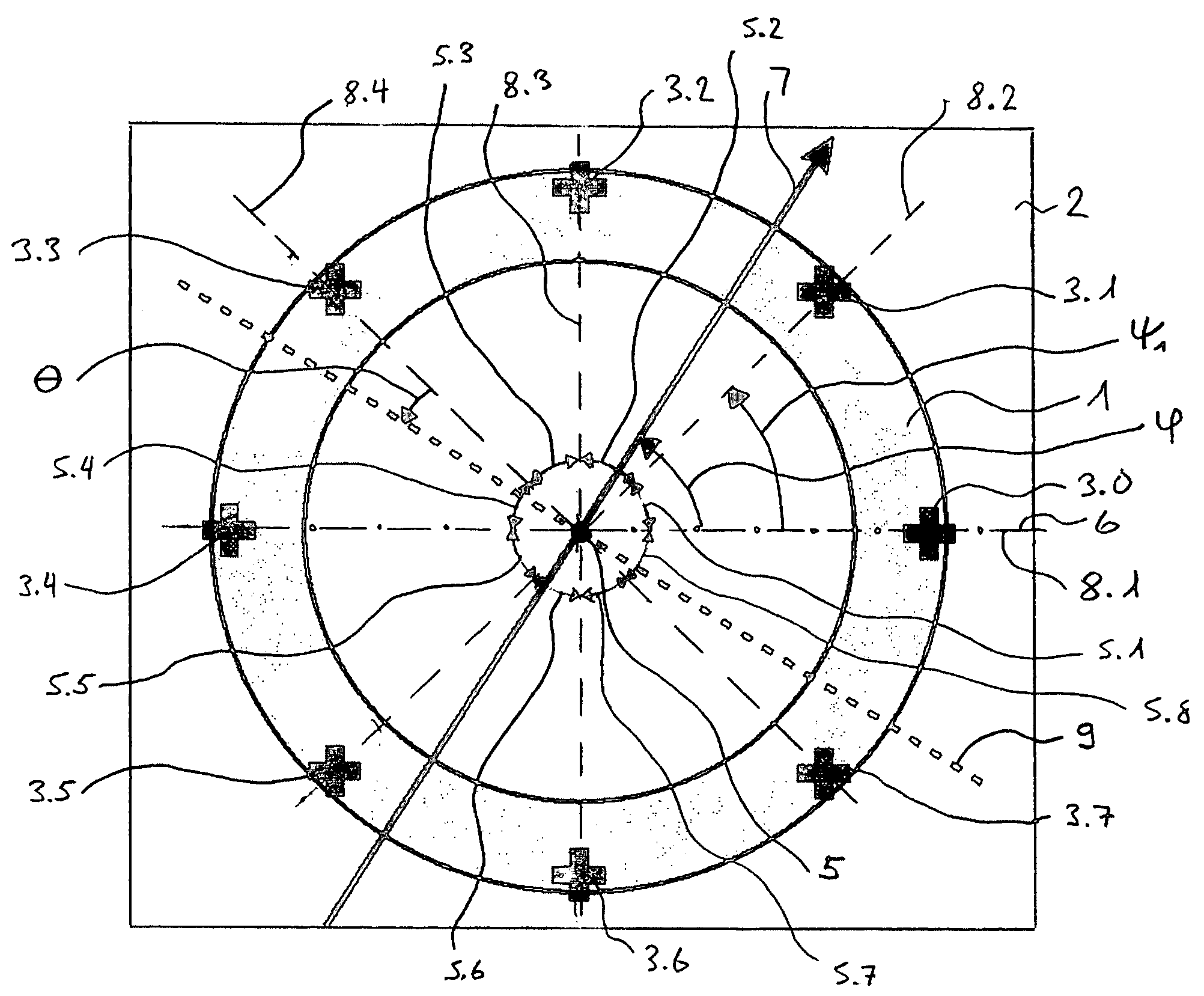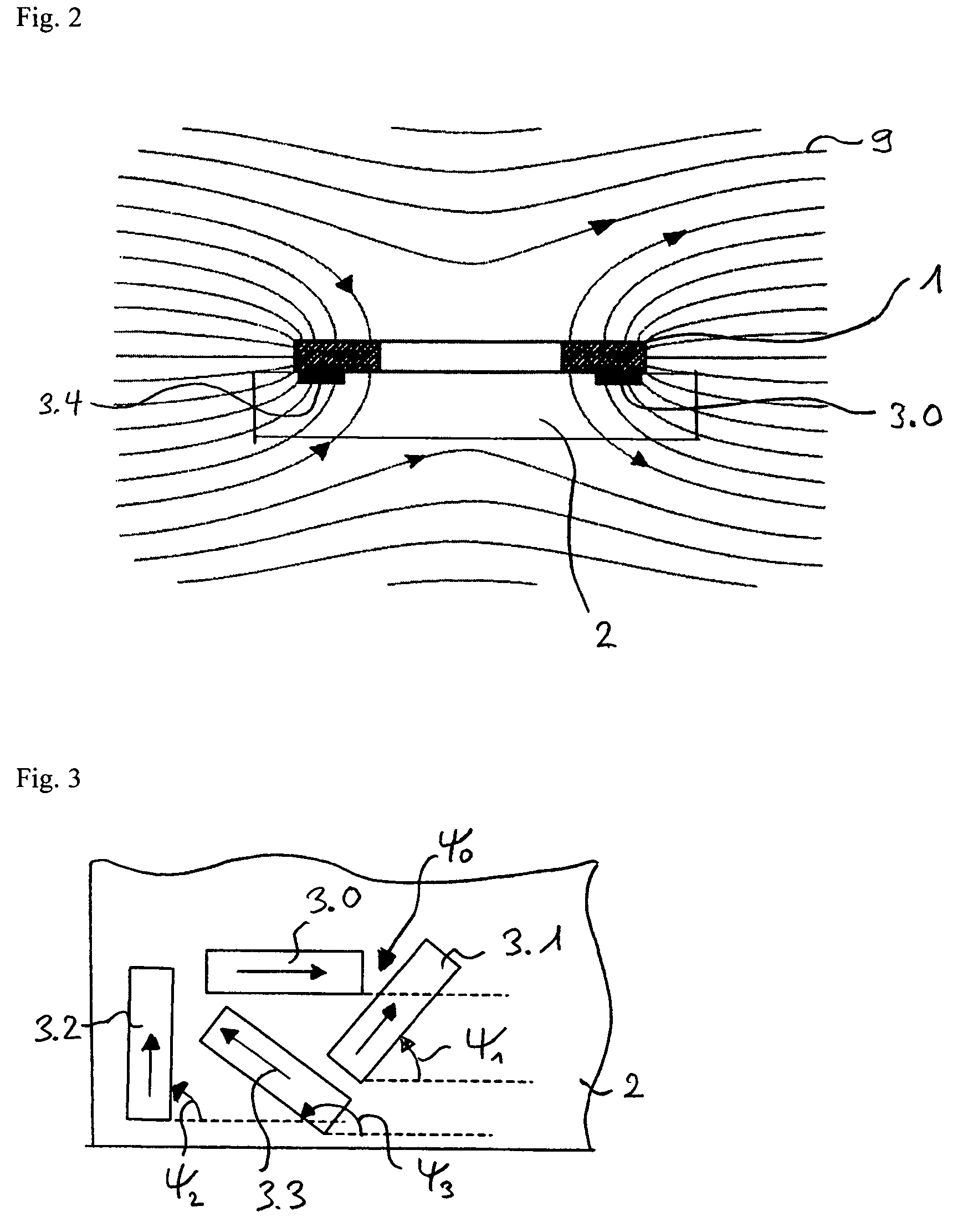Sensor for detecting the direction of a magnetic field in a plane
a magnetic field and plane technology, applied in the direction of magnetic measurements, instruments, measurement devices, etc., can solve the problems of large sensor size, high cost, and inability to accurately detect the direction of the magnetic field in the plane, so as to achieve simple wiring and evaluation, the effect of increasing the accuracy of angle determination
- Summary
- Abstract
- Description
- Claims
- Application Information
AI Technical Summary
Benefits of technology
Problems solved by technology
Method used
Image
Examples
Embodiment Construction
[0018]FIG. 1 shows a plan view of a sensor in accordance with the invention in a preferred embodiment with a magnetic field concentrator 1. The sensor consists of a semiconductor chip 2 with the flat ring-shaped or disc-shaped magnetic field concentrator 1 arranged on its upper side and a number of n magnetic field sensors 3.m, whereby the index m assumes the values of 0 to n−1, as well as logic, amplifier and evaluation circuits. The number n of the magnetic field sensors is preferably an integral power of the number 2. In the example, n=23=8. If the magnetic field concentrator 1 is disc-shaped, then it preferably has a uniform thickness. However, in the middle it can be formed thicker than at the edge 4. The magnetic field concentrator 1 therefore works as a concentrator for the two components of the magnetic field that lie in the plane designated as xy plane formed by it. The magnetic field sensors 3.0 to 3.(n−1) are arranged at regular angular distances along the edge 4 of the m...
PUM
 Login to View More
Login to View More Abstract
Description
Claims
Application Information
 Login to View More
Login to View More - R&D
- Intellectual Property
- Life Sciences
- Materials
- Tech Scout
- Unparalleled Data Quality
- Higher Quality Content
- 60% Fewer Hallucinations
Browse by: Latest US Patents, China's latest patents, Technical Efficacy Thesaurus, Application Domain, Technology Topic, Popular Technical Reports.
© 2025 PatSnap. All rights reserved.Legal|Privacy policy|Modern Slavery Act Transparency Statement|Sitemap|About US| Contact US: help@patsnap.com



